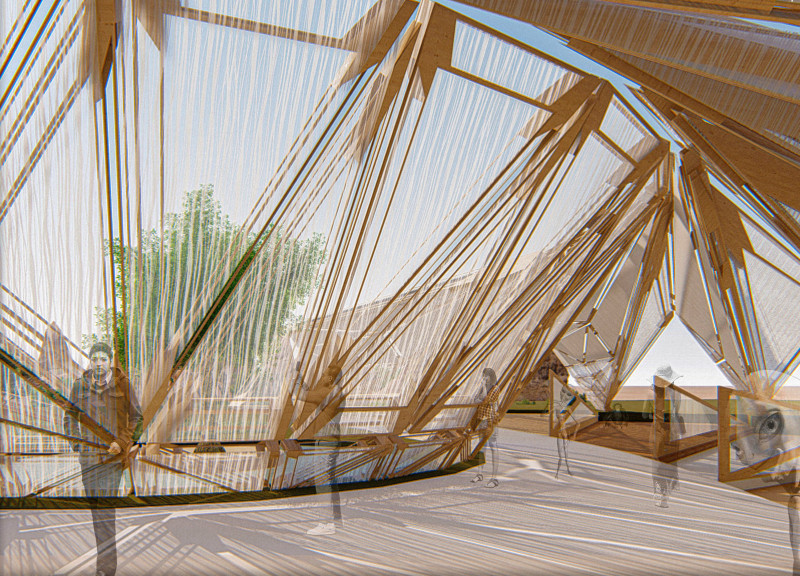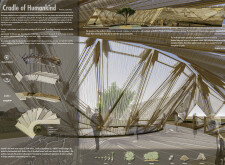5 key facts about this project
The design is located in the northwest region of South Africa, near Hartbeeshoek Earth Station, within the UNESCO World Heritage site known as the Cradle of Humankind. It functions as an interpretative center that highlights the story of human evolution. The overall design concept emphasizes the connection between people and nature, showcasing the shift from simple shelters to more complex architectural forms.
Form and Function
The design features organic shapes that reflect growth and harmony with the environment. This aspect highlights the need for community involvement, with specific areas dedicated to workshops, galleries, and shared activities. The layout encourages visitor interaction and participation in educational and cultural programs.
Material Selection
The structure employs a wooden framework that serves as the main support. This choice mirrors traditional building methods while promoting sustainability. Kapok fibers are woven into the floor design, adding texture and connection to ancient crafting techniques. These materials contribute to the overall feel of the space and connect visitors to its historical roots.
Light and Space
Natural light is a key element in the design, enhancing the inviting atmosphere. Openings are positioned to maximize sunlight, creating a space that encourages learning and reflection. Each area is designed to foster a positive experience, allowing for easy movement between functions. The relationship between light and shadow gives depth to the interior, making it more engaging for visitors.
Cultural Context
The design not only serves as an educational and gathering space but also reflects the region’s rich cultural heritage. By linking history with modern architecture, the project promotes a conversation between the natural and built environments. Attention to design details allows the pavilion to blend with its surroundings, enhancing its connection to the landscape.
The pavilion stands out for its thoughtful design, integrating the story of humanity with architectural form. It creates a space that supports contemplation and deeper engagement with its historical significance.



















































